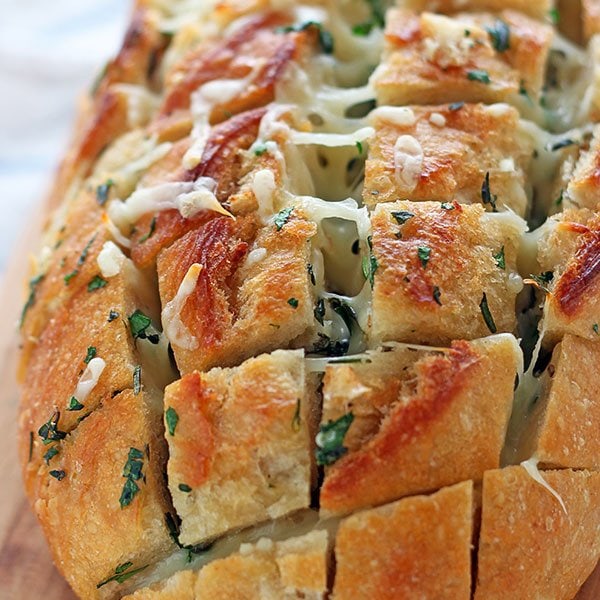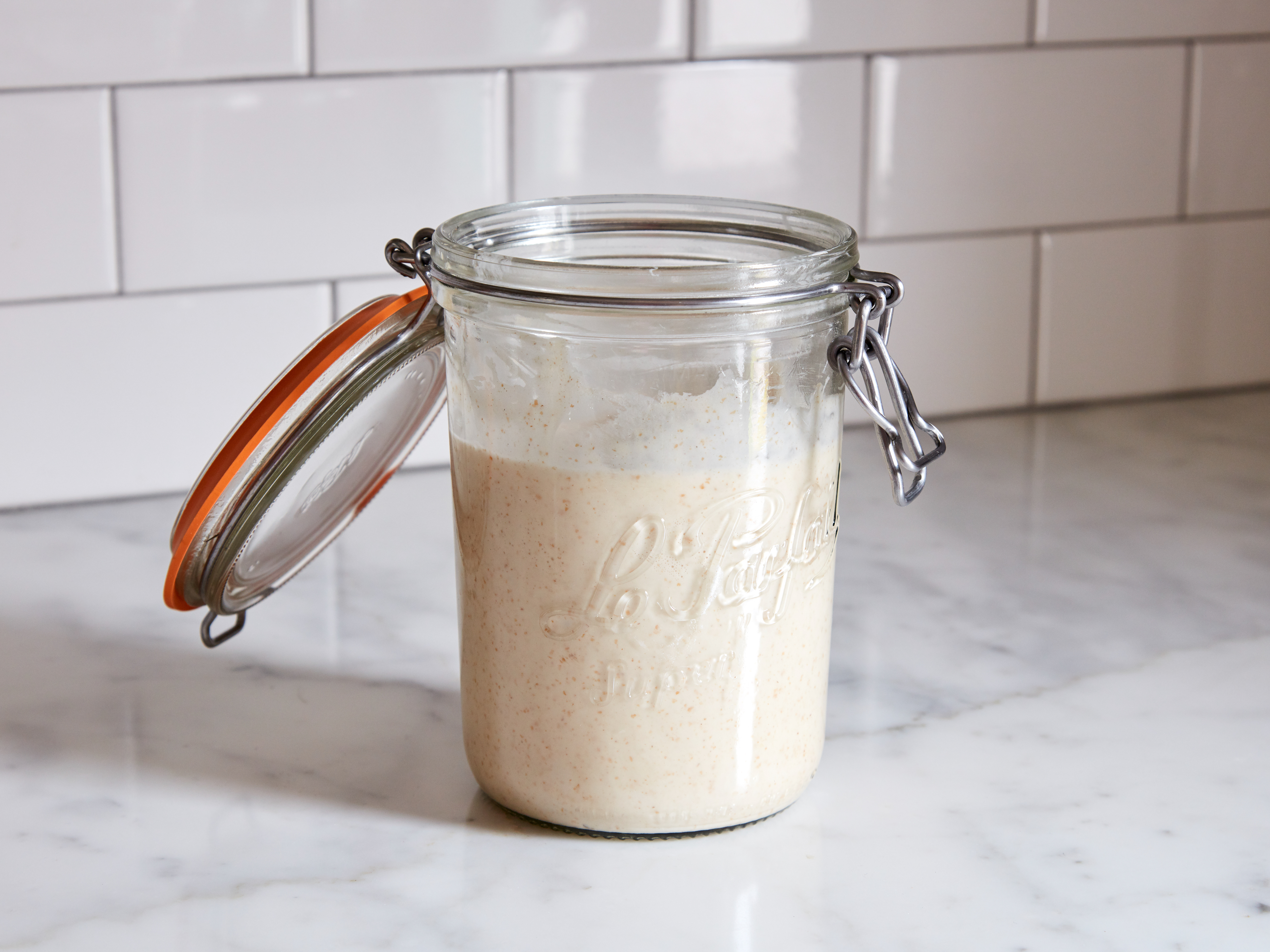

After 10 minutes remove the pizza pan from the oven, spread the pizza sauce on the partially cooked pizza dough, and continue baking for another 10 minutes. Bake the dough on your pizza pan for 10 minutes. Let the dough rest for 30 minutes uncovered. Grease the countertop and roll out the dough in the shape of your pizza pan. Butter your bowl and your hands and mound the dough into a ball. Pour approximately 6 tablespoons of starter into your mixing bowl. Stir, and let the jar sit on the countertop until it reaches room temperature. Stir until thoroughly mixed and place the jar on your countertop for 4-5 hours before placing the jar in the refrigerator. ***Feed your sourdough starter in a quart mason jar with l scant cup flour and 1/2 cup of filtered water. Remove bread from the pan and cool on a rack. After 30 minutes remove the lid and continue baking for another 15 minutes. Put the lid on your baking pan and place it in the center of your preheated oven. Lather with butter, or oil, or beaten egg whites. Use your scissors or sharp knife to make an X or other design on the ball of dough. Place the dough (you may have to remound the ball of dough) into your 6-quart enameled cast iron Dutch Oven, while your oven preheats to 450 degrees. Pour approximately 3/4 cup of starter into your mixing bowl. You will need a 6-quart Enameled Cast Iron Covered Dutch Oven. Mix or knead until the bread pulls away from the mixing bowl sides. Stir the starter with the water, add the honey, and the flour, one cup at a time. I use the Ball White Lids and just barely turn the lid, not too tight, not too loose. What container is the best to store the starter in?Ī crock or glass quart mason jar.

This is seldom a problem, but can happen from time to time. If there is any question if mold is present, you’ll want to throw all the starter out and start over. That seldom happens if properly stored in the fridge. If the starter is dark black, brown, white, or red spots there is a chance you’ve developed mold in the starter. Be sure to scrape the black part off, feed the starter and use it or place it back in the fridge. If there is also a slight black color you should be ok to use it too. Simply pour off the liquid and prepare / feed the starter as mentioned above. Starter stored in the fridge for an extended period may end up having a layer of liquid on top in your container. What do I do if it goes dark on the top of the starter? I feed the starter that is left in the jar with one scant cup of flour and 1/2 cup of water. I take out 3/4 cup needed for my recipe and place it in the mixer. UPDATE: I no longer throw out any starter. When you need to feed the stored starter, just pull it from the fridge, throw out all but 25% of the starter, and then add one scant cup flour and 1/2 cup filtered water and stir as before. You should plan to feed it weekly, but don’t worry if you miss a week from time to time. Do I store my starter in the fridge?Īs mentioned above, you are better off to store the starter in your fridge if you don’t plan to bake the bread when the starter is ready for use. Unless you’re ready to put the starter to use and make some bread, then you should consider storing the starter in you fridge as outlined in the next topic. The problem with storing the starter on the countertop is the need to continue the “feeding” process every day. Do I store the starter on the countertop? Just set a timer on your phone or calendar app to remind you to feed it every week. It is suggested that feeding once a week is sufficient. Some people wonder if we have to feed the starter every day if it’s stored in the refrigerator. How often do I need to feed my starter that’s in the fridge? UPDATE: I NO longer do the float test, I have never done it again after taking the picture above. The black arrow shows my 1 teaspoon of starter is floating, yay! It’s good to go! No worries, if it sinks, it just means your starter needs to be fed again and let sit for another 6-12 hours at room temperature. If it floats, it’s good and ready to use. Grab a glass of filtered water and drop a teaspoon of your starter into the glass. Okay, now if you’re wondering whether your starter is ready to make bread, pancakes, or whatever, here’s what you do.


 0 kommentar(er)
0 kommentar(er)
